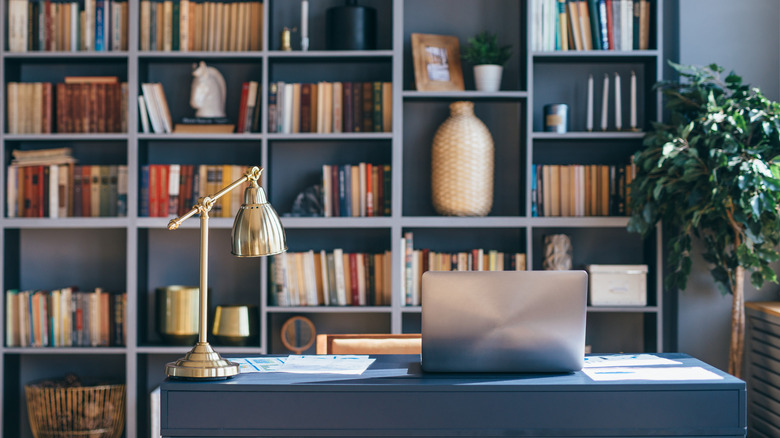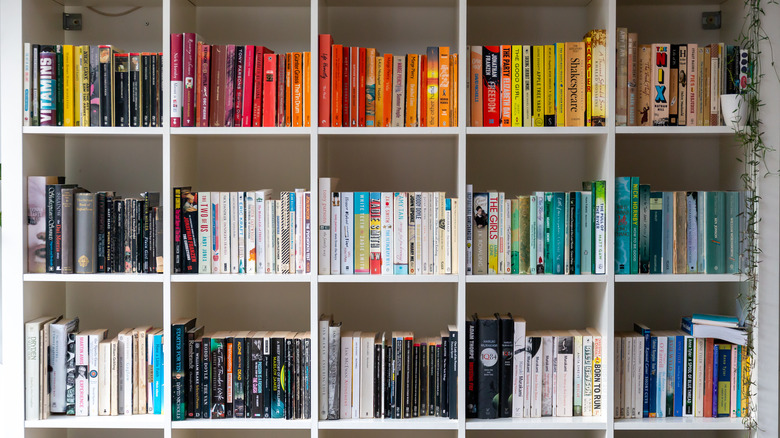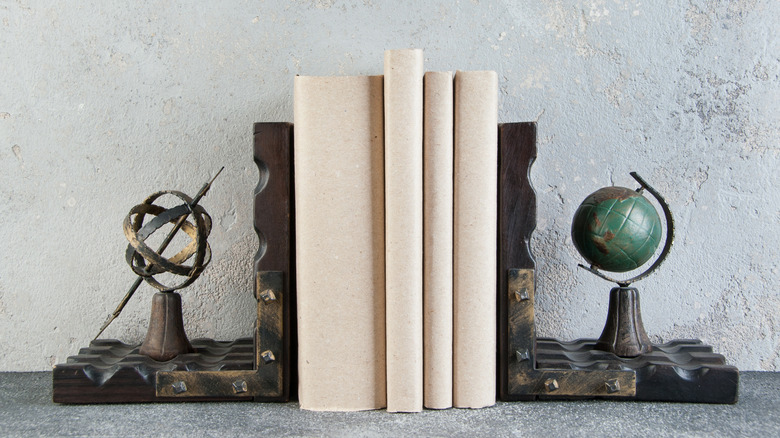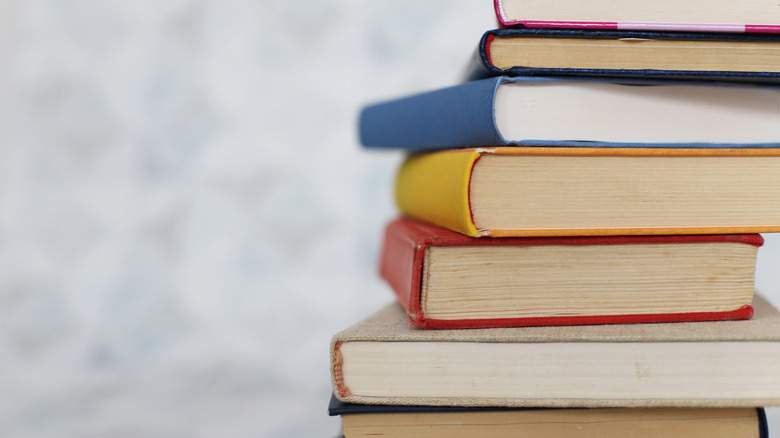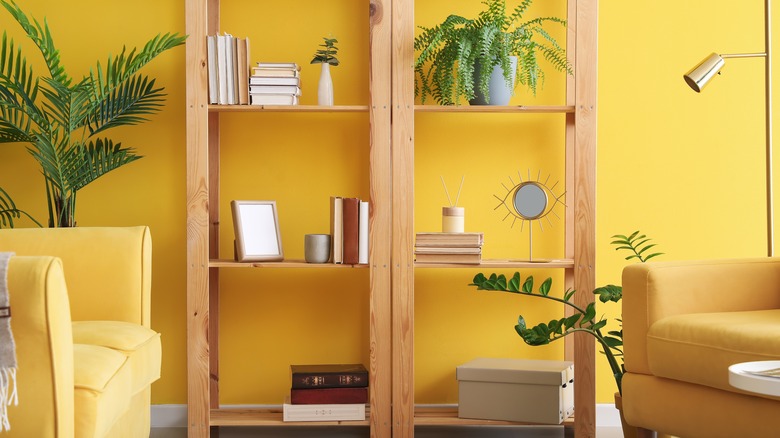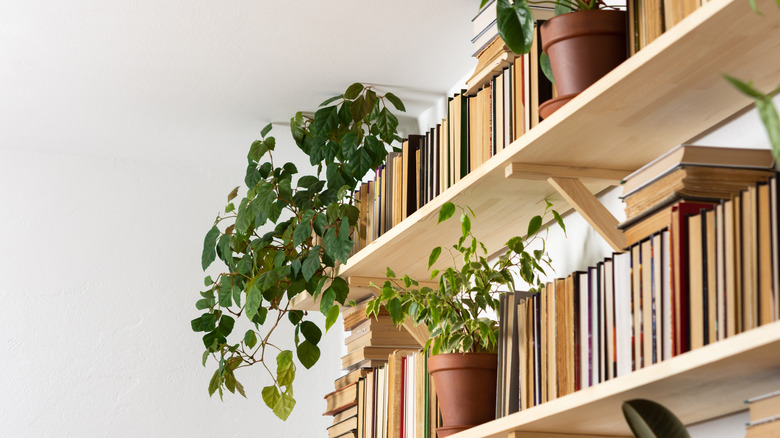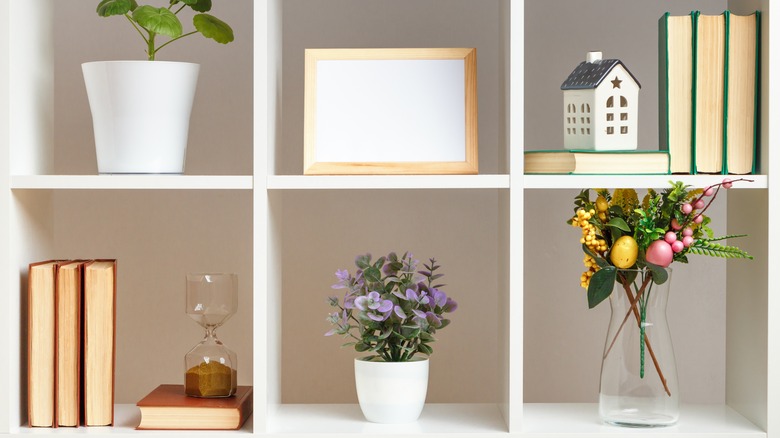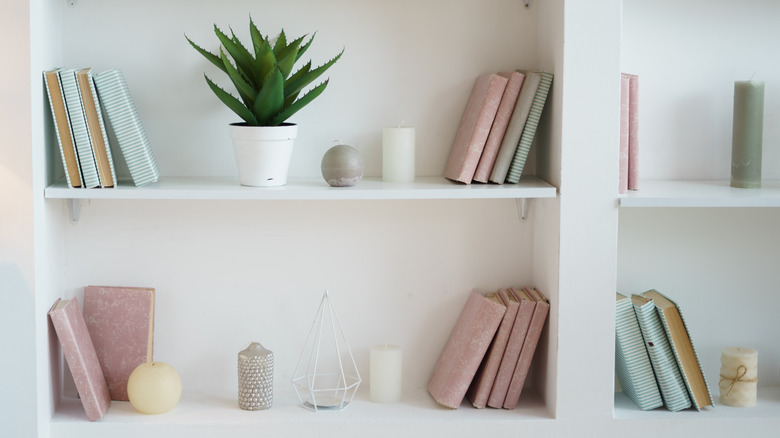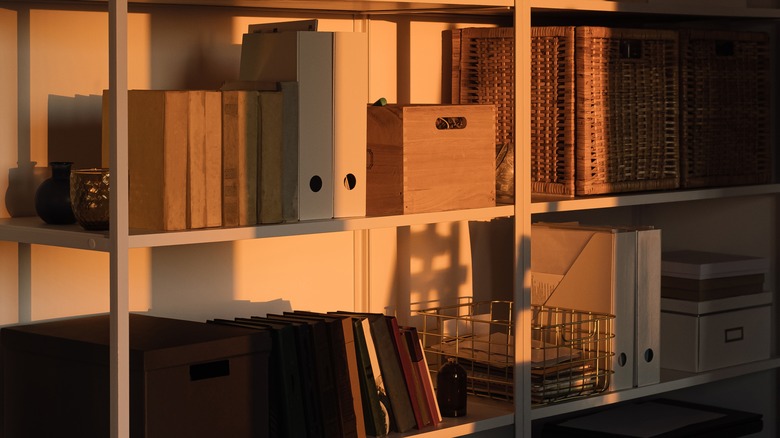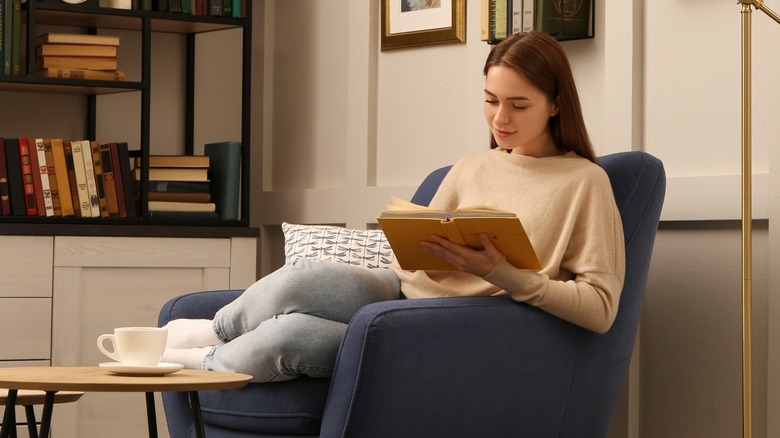Organization Tips That Will Make Your Bookshelf So Much Better Looking
If you're a book lover, you know how important it is to have an organized bookshelf. Not only does it create a visually appealing display, but it also makes finding your favorite book easier. A well-organized bookcase can offer a variety of benefits, such as saving time and frustration when you're looking for a specific title and creating a sense of calm in your environment. But organizing a bookshelf can be a daunting task, especially if you have a large collection.
We've gathered some of the most useful tips and tricks to help you create an organized and aesthetically pleasing bookshelf that reflects your personality and style. We'll cover how to arrange books by color, size, or emotion. By following these tips, you'll create a stunning and functional bookcase that will add a fresh level of elegance to the room it's in. So, whether you're a self-proclaimed disorganized person or just looking for inspiration, read on to learn how to transform your bookshelf into a work of art.
Sort books by color
Organizing your bookshelf by color can be a fun and unique way to showcase your collection. It also creates a focal point in the room and adds an element of sophistication to your decor. To organize your bookshelf this way, start by sorting your books into like colors. For instance, group all of your red books together and all of your blue books together. If you have books with multiple colors, decide which color dominates and place the book in that particular group.
Once you've done this, it's a matter of storing them back on the shelves in whatever spectrum you prefer, such as a gradient or a rainbow. To further enhance the display, consider incorporating decorative items like figurines or plants that complement the color scheme of your bookshelf. For example, you could add a small potted succulent to a shelf with green books or a colorful vase to a shelf with brightly colored books. These items can add visual interest and help break up the color blocks on the shelf. When in doubt, turn to the color wheel.
Use decorative bookends
Decorative bookends are an easy and effective way to organize and enhance the look of your bookshelf. They serve a practical purpose by keeping your books upright and in order, but can also add a touch of personality and style to your display. Bookends come in a variety of materials and designs, including metal, wood, marble, and novelty shapes. For instance, you could choose sleek and modern metal bookends for a minimalist feel, or opt for rustic wooden bookends for a more traditional look. They can also serve as a focal point or decorative accent on your bookshelf.
When selecting bookends, consider both your personal style and the overall style of your bookcase. If you want to add a pop of color or pattern to your display, look for decorative bookends with bold or whimsical designs. You could choose bookends shaped like animals, characters, or even famous landmarks. Another way to use bookends is by grouping categories of books together, such as fiction, non-fiction, or biographies. For heavier books, you may need to use multiple bookends to keep them stable. You can even use them to showcase other small objects, like a potted plant or globe.
Organize books by size
Organizing your books by size is a practical way to make your bookcase look both aesthetically pleasing and functional. Begin by gathering all your books in one place and sorting them by size, with the largest books on one side and the smallest on the other. This creates a visual hierarchy on your bookcase and helps balance the overall look. When placing your books back on the shelves, start with the largest books on the bottom shelf, then work your way up with smaller books on higher shelves.
Leave some space between each book to make it easier to remove them without disturbing the rest of the collection. If you want to take your book organization to the next level, you can also incorporate the above-mentioned tips, such as sorting by color in addition to size. For example, after you've sorted your books by size, you can further group them by color to create a rainbow effect on your bookshelf. This adds an element of visual interest and makes your bookcase even more attractive.
Follow the rule of three
The rule of three is an interior design rule that states that objects arranged in groups of three are more aesthetically pleasing to the human eye. In fact, according to Melissa Hughes, the rule of three can be found in fairy tales ("Three Blind Mice"), mottos ("blood, sweat, and tears"), and technology ("thinner, lighter, faster"). Our brains have developed to notice patterns, especially groups of threes. That's why organizing your bookshelf in this way will not only be pleasing to the eye, but it'll also give it a sense of harmonious balance that helps our brains to remain calm.
To start, look at your collection and group books into sets of three based on a common theme, color, or even author. Next, arrange your bookshelf by alternating the sets of three. For example, place one set of books vertically, followed by a set of three books horizontally, and so on. When arranging your books, don't forget to leave some breathing room. A cluttered bookshelf can quickly become overwhelming. By grouping books with the rule of three in mind, you can create mini libraries along your bookcase, making it easier to find what you're looking for.
Remove the dust jackets
Removing the dust jackets from your hardcover books is a simple way to create a more cohesive and elegant look on your bookshelf. Dust jackets can be beautiful, but they are often delicate and prone to damage, especially if they're frequently handled. Without the jackets, you not only protect your books from wear and tear, but also showcase the intricate designs and typography on the book spines. To start, gather all of your hardcover books and carefully remove the dust jackets.
If you prefer to keep the jackets, store them in a flat container for safekeeping, then put them in a cool, dry space away from direct sunlight as this can cause the covers to fade over time. Next, organize the books by color or size to create a visually appealing display. Since the spines of the books will be the primary focal element, grouping them by similar patterns or hues can make a significant impact. A clean and streamlined bookshelf not only looks great but also makes it easier to find the books you're looking for.
Display books vertically and horizontally
By organizing your books both vertically and horizontally, you can optimize the space on your bookshelf while also creating a sense of balance. This method enables you to store more books on your shelf, allowing you to build a larger library in a smaller area. This technique also preserves the condition of your books. When books are placed upright for long periods, they tend to warp. However, by alternating the placement of your books, you can prevent this from happening, which improves the longevity of your collection.
To get started, categorize your collection by size or color. After grouping your books, place larger books horizontally on the shelf and smaller books vertically. This arrangement creates a natural balance between your books and maximizes your use of shelf space. As you set your books, alternate between vertical and horizontal orientation. This way, your eyes will have a smoother transition from one section to another, making it easier to browse through your books.
Embrace negative space
Embracing negative space on your bookshelf can do wonders to create an aesthetically pleasing display. Negative space refers to the empty areas between objects, and using it effectively helps draw attention to the placed items. When it comes to bookshelves, negative space can make a cramped collection appear more open and balanced. By allowing some breathing room for books and other items, the eye can take in the overall showcase easier. For additional visual interest, add some decorative pieces to your shelves, such as plants, vases, or sculptures. You can place them on top of stacks of books or on their own in open spaces.
To include negative space on your bookshelf, begin by decluttering your collection. Next, experiment with arranging books both horizontally and vertically as mentioned before, leaving gaps between stacks. This creates a more dynamic display and allows for negative space to be incorporated. If your collection still feels too cramped, consider adding shelves or display boxes. These can be mounted to the wall and used to store smaller items. Remember that negative space doesn't have to be uniformed or symmetrical. Play around with different arrangements until you find what works best for you.
Use baskets for extra storage
Baskets are an excellent way to increase storage on your bookshelves while also adding a touch of style to your display. They provide a convenient and stylish solution for storing items that may not fit neatly on shelves, such as magazines, remote controls, or other small objects. When selecting baskets for your bookcase, consider the size and style that will best suit your space. There are many types of baskets to choose from, ranging from woven baskets to sleek metal ones. Woven baskets can add a touch of warmth to a space, while metal baskets lend a more modern and minimalist feel.
The color of the baskets should also be taken into account, as they can complement the other items on your bookshelf. Once you have your baskets, use them to corral items on your shelves that might otherwise look cluttered or disorganized. For example, you could use a basket to store your remote controls or a stack of magazines. Another way to use baskets on your bookshelf is as a backdrop for other items. Place a larger basket toward the back of a shelf and arrange books in front of it. This creates a layered effect and adds depth to your display.
Organize books by emotion
Organizing books by emotion can add an interesting dimension to your collection and elevate its aesthetic appeal. It allows you to group books that evoke similar emotions or moods together, creating a visual representation of the feelings that you experience while reading them. This is how writer and podcaster Zibby Owens displays certain books in her bookstore so customers can find titles that make them cry, laugh, or feel hope. It may seem unconventional, but it adds functionality and a quick reference. This way, if you want a book that makes you happy, you have an entire collection to choose from.
To organize your books this way, start by identifying the emotions that each book elicits. Consider the themes, characters, and plot of each title. For example, a book with a happy ending might make you feel joyful, while a thriller might increase your paranoia. Some other emotional groups might be nostalgic, conflicted, inspired, and more. Once the groups are ready, add them to the shelves by category, leaving space in between each one so they don't get mixed. Organizing your books this way is not only visually appealing, but it provides insight into your reading habits. It also tells a story about your emotional journey as a reader and the books that have affected you the most.
Schedule regular decluttering sessions
Maintaining an organized bookshelf requires regular decluttering of your collection. This process can be challenging, especially when you're emotionally attached to your books. However, holding onto books you no longer need or enjoy contributes to clutter and disorganization. To declutter your books, start by categorizing them based on genre or topic. This will help you identify which books you need to keep and which ones you can donate, sell, or give away. Consider setting specific criteria for what books you want to keep, such as whether you have read them recently or if they hold sentimental value.
Once you've identified the books you no longer need, decide in advance where you want to donate or sell them. This will make the process smoother and more efficient. You can donate them to a local library, school, or charity. You can sell them online using apps like PangoBooks or bring them to a used bookstore. To prevent clutter from building up, create a decluttering schedule that works for you. A good rule of thumb is to declutter your books once a year, though if you have a large collection, do it twice a year or even quarterly. Additionally, consider using the "one in, one out" rule: For every new book you buy, get rid of an old one to make room.
